Birdfinding.info ⇒ A critically endangered form of Sharp-shinned Hawk. Maricao State Forest is the only publicly known site where it has been observed consistently in recent years. Within Maricao, the best place to look for it is along the headquarters access road, which has hosted a resident pair for many years. Additional pairs have been found in remote parts of Monte Guilarte and Toro Negro State Forests.
“Puerto Rican Sharp-shinned Hawk”
Accipiter striatus venator
Endemic to Puerto Rico, where it is on the brink of extinction. An extremely rare and declining resident of humid montane forests in the western Cordillera Central from Maricao to Toro Negro State Forest.
Until the 1990s, it persisted in the Sierra de Cayey (Carite State Forest) and the Sierra de Luquillo (El Yunque National Forest), but it is believed to be extirpated from these areas. The population has declined from an estimated 240 individuals in 1985 to 75 in 2017 before Hurricane María, to an ascertained population of 19 individuals located through intensive surveying in the months following the hurricane.
Identification
Adult has slate-gray upperparts, rusty orange cheeks, and a “vested” pattern on the underparts: solid rusty orange sides with orange-and-white barring in the middle, and a bright white belly.
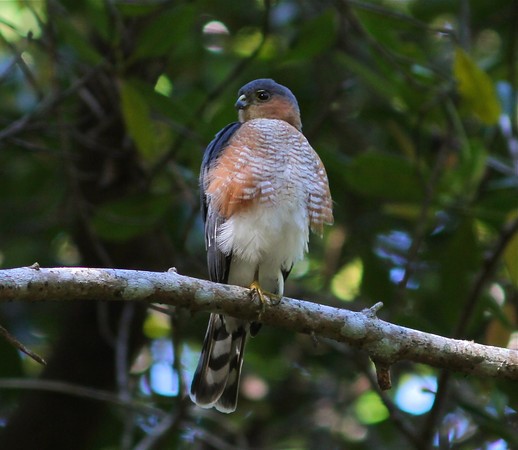
“Puerto Rican Sharp-shinned Hawk,” A. s. venator. (Maricao State Forest, Puerto Rico; March 27, 2013.) © Eric Hynes
Noticeably smaller than the “Northern Sharp-shinned Hawk”, which occurs in winter on the northern Bahamas and Cuba, and is a casual visitor to other Caribbean islands, possibly including Puerto Rico. “Puerto Rican” is distinctly “dove-headed,” with a gentle facial expression compared to other forms of Sharp-shinned Hawk. Also differs in having much darker red eyes.
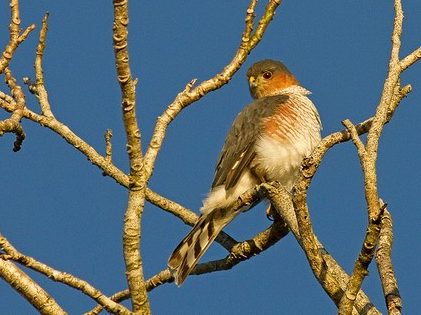
“Puerto Rican Sharp-shinned Hawk,” A. s. venator. (Maricao State Forest, Puerto Rico; 2012.) © Alberto Lopez

“Puerto Rican Sharp-shinned Hawk,” A. s. venator. (Maricao State Forest, Puerto Rico.) © Rafy Rodríguez
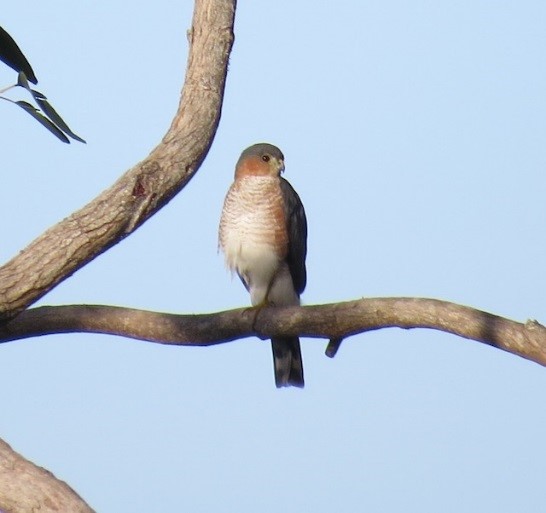
“Puerto Rican Sharp-shinned Hawk,” A. s. venator. (Maricao State Forest, Puerto Rico; December 16, 2016.) © Steve Semanchuk
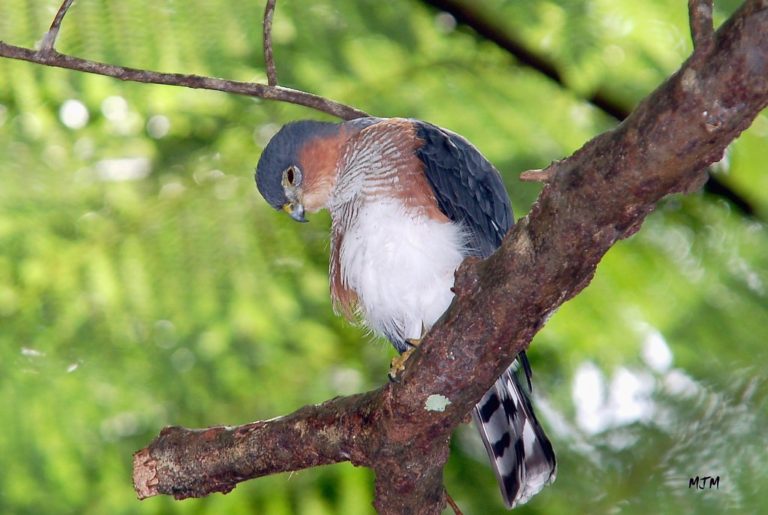
“Puerto Rican Sharp-shinned Hawk,” A. s. venator. (Maricao State Forest, Puerto Rico; March 4, 2006.) © Michael J. Morel
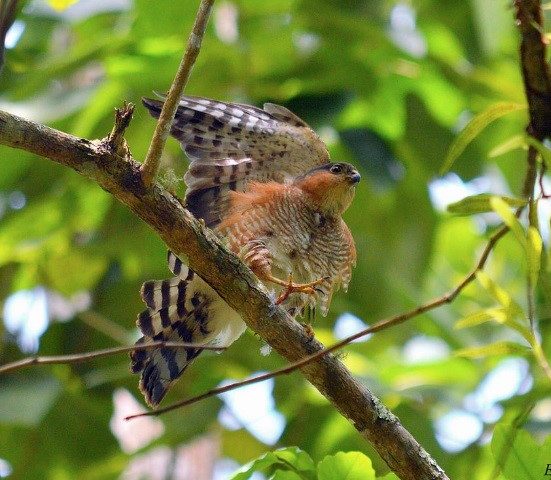
“Puerto Rican Sharp-shinned Hawk,” A. s. venator. (Maricao State Forest, Puerto Rico; June 9, 2015.) © Ernesto Burgos

“Puerto Rican Sharp-shinned Hawk,” A. s. venator, with prey. (Maricao State Forest, Puerto Rico.) © Michael J. Morel

“Puerto Rican Sharp-shinned Hawk,” A. s. venator, with prey. (Maricao State Forest, Puerto Rico; 2009.) © Michael J. Morel
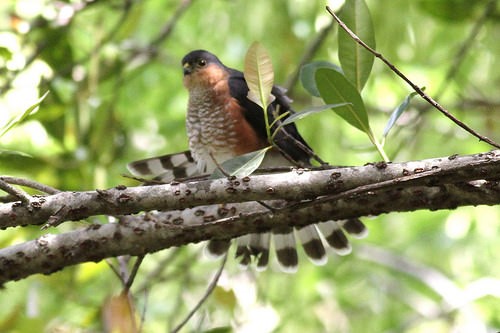
“Puerto Rican Sharp-shinned Hawk,” A. s. venator, fanning its tail. (Maricao State Forest, Puerto Rico; March 31, 2012.) © Nancy Crosby
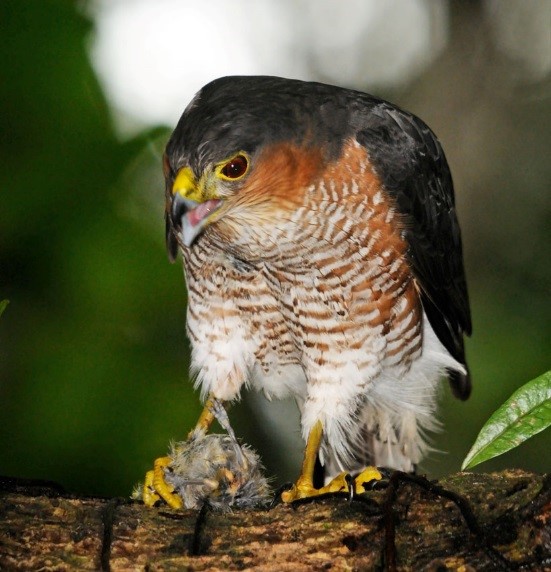
“Puerto Rican Sharp-shinned Hawk,” A. s. venator, with prey. (Maricao State Forest, Puerto Rico.) © Michael J. Morel
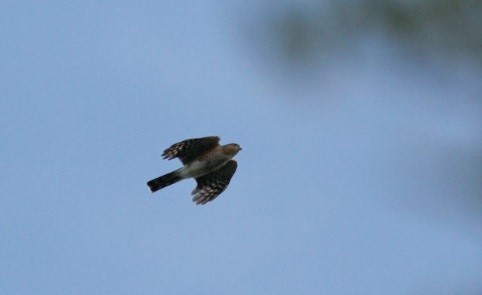
“Puerto Rican Sharp-shinned Hawk,” A. s. venator. (Maricao State Forest, Puerto Rico; April 19, 2014.) © Jay McGowan
Immature “Puerto Rican” is mostly white below, with fine, brown streaks and spots on the breast—not coarsely streaked, as in immature “Northern.”
Its eye color also differs from that of immature “Northern”: dark with a slightly paler, dull-yellow iris.
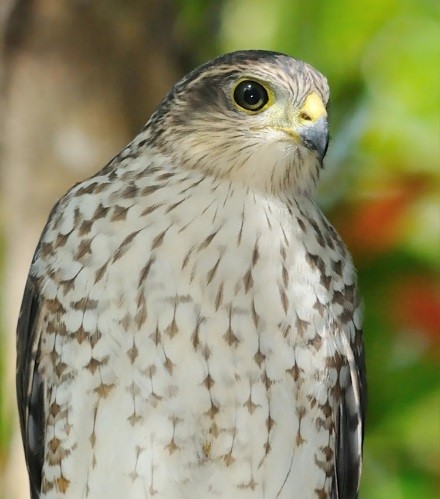
“Puerto Rican Sharp-shinned Hawk,” A. s. venator, immature. (Maricao State Forest, Puerto Rico; 2009.) © Michael J. Morel
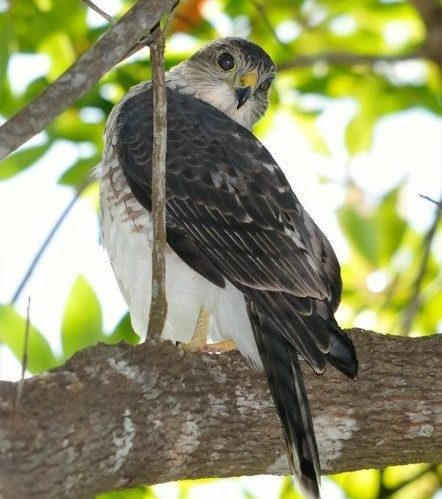
“Puerto Rican Sharp-shinned Hawk,” A. s. venator, immature. (Maricao State Forest, Puerto Rico; 2009.) © Michael J. Morel
Voice. Territorial call is soft, squeaky whistle repeated about 5-to-10 times per series.
Notes
Monotypic form, one of four potentially distinct forms of Sharp-shinned Hawk. Has been proposed to deserve recognition as a separate species.
On the brink of extinction. IUCN has not evaluated its conservation status, but it would certainly qualify as Critically Endangered. The U.S. federal government lists it as Endangered.
References
Birdwatching Daily. 2018. Only 19 Puerto Rican Sharp-shinned Hawks remain after 2017 hurricane season (March 7, 2018). https://www.birdwatchingdaily.com/blog/2018/03/07/19-puerto-rican-sharp-shinned-hawks-remain/.
eBird. 2018. eBird: An online database of bird distribution and abundance. Cornell Lab of Ornithology, Ithaca, N.Y. http://www.ebird.org. (Accessed September 25, 2018.)
Ferguson-Lees, J., and D.A. Christie. 2001. Raptors of the World. Houghton-Mifflin, Boston.
Gallardo, J.C., and F.J. Vilella. 2014. The Puerto Rican Sharp-shinned Hawk (Accipiter striatus venator): An Endangered Insular Species on the Edge. Spizaetus 17:2-13.
Raffaele, H. 1989. A Guide to the Birds of Puerto Rico and the Virgin Islands. Princeton University Press, Princeton, N.J.
Raffaele, H., J. Wiley, O. Garrido, A. Keith, and J. Raffaele. 1998. A Guide to the Birds of the West Indies. Princeton University Press, Princeton, N.J.
U.S. Fish and Wildlife Service. 1997. Puerto Rican Broad-winged Hawk and Puerto Rican Sharp-shinned Hawk (Buteo platypterus brunnescens and Accipiter striatus venator) Recovery Plan. https://ecos.fws.gov/docs/recovery_plan/970908.pdf.
